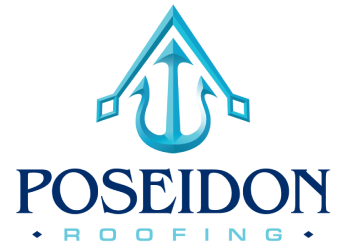At Poseidon Roofing, we take pride in being recognized as one of the Best Roofing Contractors in the industry. We understand that the longevity and durability of your roof are crucial to protect your investment. To achieve this, regular maintenance is essential. In this blog post, we will explore the maintenance practices that we, as a Local Roofing Company, recommend to ensure the durability of your roof.
- Regular Roof Inspections:
Routine inspections are the cornerstone of roof maintenance. Our Local Commercial Roofing Contractors at Poseidon Roofing recommend scheduling professional roof inspections at least twice a year. These inspections help identify minor issues before they turn into costly problems. We check for loose or damaged shingles, signs of water damage, and potential leaks. - Clean Gutters and Downspouts:
Clogged gutters and downspouts can lead to water backup and damage to your roof and home’s foundation. Regularly cleaning them out ensures proper drainage and prevents water-related issues that could compromise your roof’s durability. - Trim Overhanging Branches:
Overhanging tree branches can rub against your roof’s surface, causing damage to shingles or even puncturing the roof. Our Roofing Contractor team recommends trimming branches away from your roof to prevent unnecessary wear and tear. - Address Moss and Algae Growth:
Moss and algae can grow on your roof, especially in damp climates. Not only can they be unsightly, but they can also cause damage over time. Poseidon Roofing offers roof cleaning and treatment services to remove and prevent moss and algae growth. - Seal Gaps and Cracks:
Over time, your roof may develop gaps and cracks that allow water to seep in. Our experts will inspect your roof for any openings and seal them properly to prevent leaks and water damage. - Inspect and Clean Flashing:
Roof flashing, such as around chimneys and vents, can deteriorate over time. We recommend regular inspections to ensure that flashing is intact and sealing correctly. Damaged flashing can lead to water infiltration, which can compromise your roof’s durability. - Attic Inspection:
Don’t forget the importance of your attic in maintaining a durable roof. Proper attic ventilation and insulation can help regulate temperature. Our team can assess your attic to ensure it’s contributing to your roof’s longevity.
Conclusion:
At Poseidon Roofing, our commitment to being a Local Roofing Company means we prioritize the durability of your roof above all else. By following these maintenance practices and scheduling regular inspections with our experienced Local Commercial Roofing Contractors, you can extend the life of your roof and avoid costly repairs.
Remember, proactive maintenance is the key to a durable roof, and Poseidon Roofing is here to help you protect your investment.

